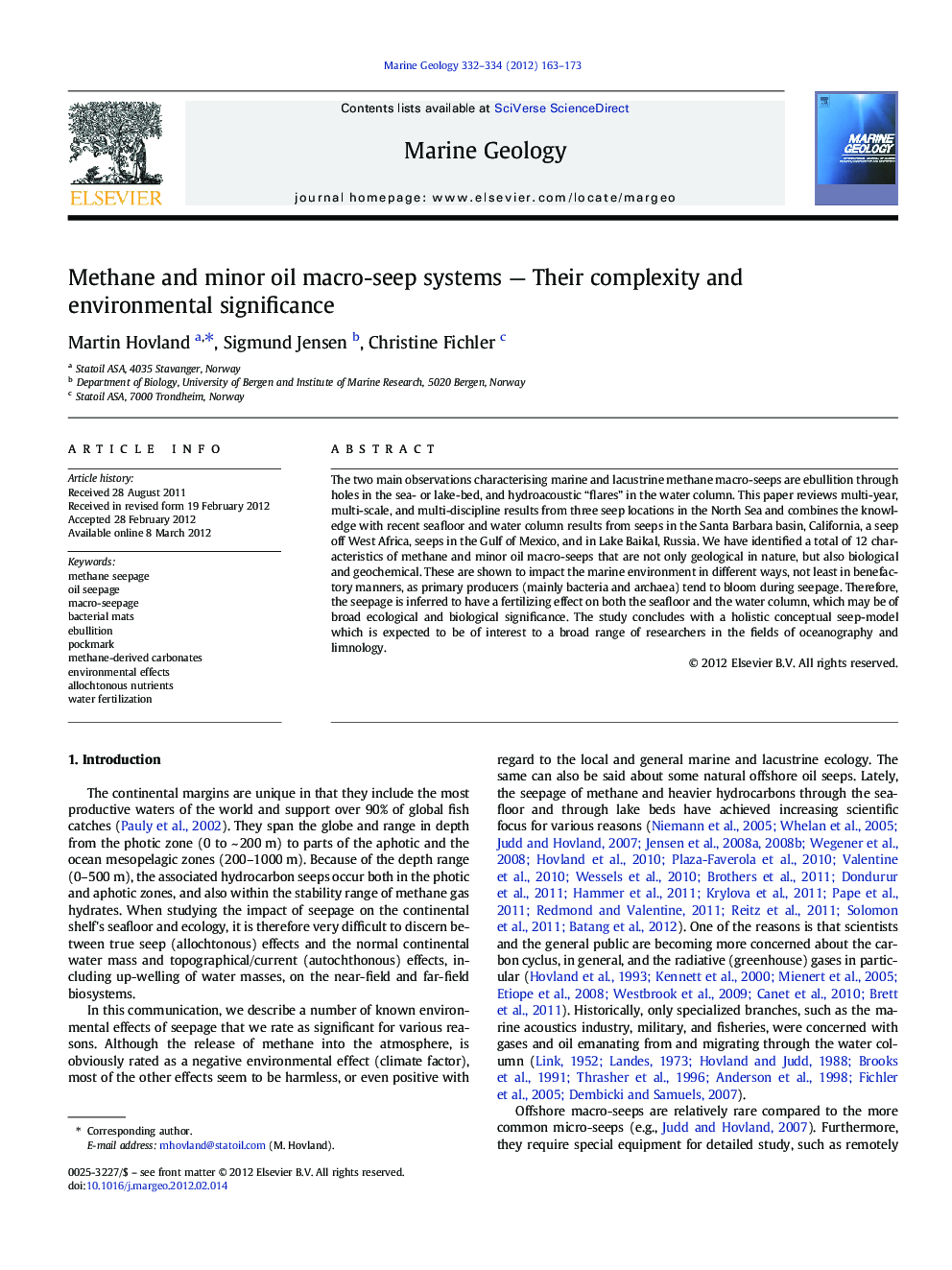| Article ID | Journal | Published Year | Pages | File Type |
|---|---|---|---|---|
| 4718477 | Marine Geology | 2012 | 11 Pages |
The two main observations characterising marine and lacustrine methane macro-seeps are ebullition through holes in the sea- or lake-bed, and hydroacoustic “flares” in the water column. This paper reviews multi-year, multi-scale, and multi-discipline results from three seep locations in the North Sea and combines the knowledge with recent seafloor and water column results from seeps in the Santa Barbara basin, California, a seep off West Africa, seeps in the Gulf of Mexico, and in Lake Baikal, Russia. We have identified a total of 12 characteristics of methane and minor oil macro-seeps that are not only geological in nature, but also biological and geochemical. These are shown to impact the marine environment in different ways, not least in benefactory manners, as primary producers (mainly bacteria and archaea) tend to bloom during seepage. Therefore, the seepage is inferred to have a fertilizing effect on both the seafloor and the water column, which may be of broad ecological and biological significance. The study concludes with a holistic conceptual seep-model which is expected to be of interest to a broad range of researchers in the fields of oceanography and limnology.
► They can alter the topography of the seafloor. ► They introduce allochtonous minerals (including nutrients) to the seafloor and water column. ► Most of the dozen identified environmental effects of seeps are positive for the ecology in the ocean and lakes. ► The most derogatory effect is perhaps added carbon to the atmosphere.
